
Some commonly used functions and their Fourier Transforms
Definition
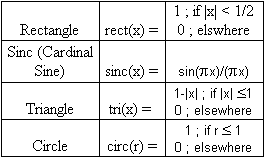
Graphic representation
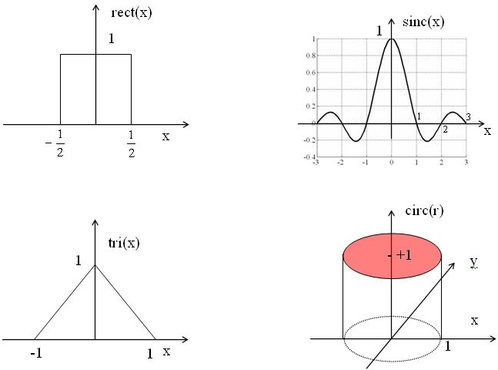
Fourier transforms of several separable functions in Cartesian coordinates
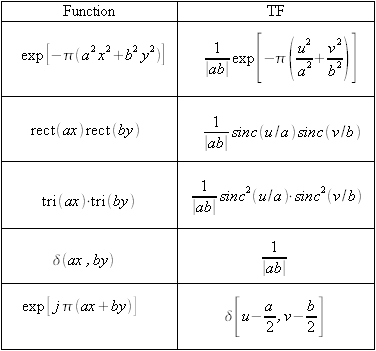
The circle function and its Fourier transform
The relation (I-2) for functions of circular symmetry (see paragraph “functions with circular symmetry”) applies, with:
By replacing (I-3) in (I-2), we obtain:
We note:
 ; the integral bounds in relation (I-4) are equal to 0 and
; the integral bounds in relation (I-4) are equal to 0 and
 .
.
Therefore:
Using the relation:
where J1(x) is defined as the Bessel function of first order, we finally obtain:
This function is represented on figure I-2.
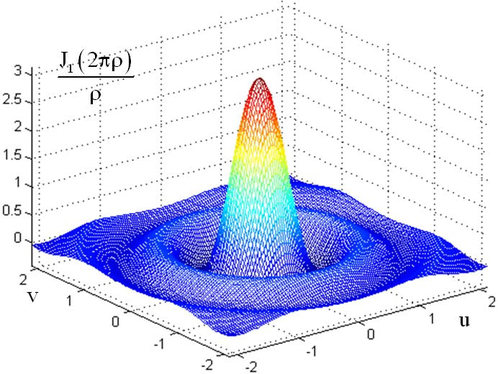
We note that the Fourier Transform of the function circle has a circular symmetry. It is composed of a central peak and a series of concentric rings of decreasing amplitudes.
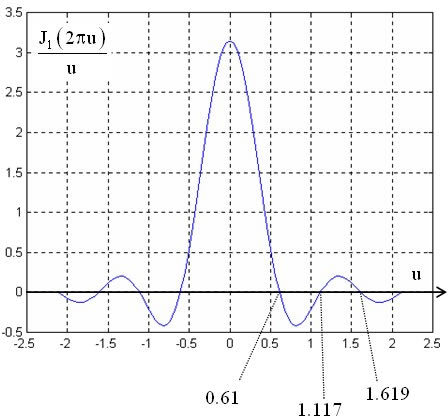
Figure I-3 represents a radial profile of this function. The zeros are not regularly spaced along each ray as it is the case for the sinc (cardinal sine) function. The radius of the central peak is equal to 0.61.